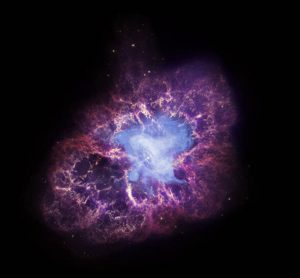
A much-discussed example of the difficulties associated with allocating credit between junior and senior researchers was the 1967 discovery by Jocelyn Bell, then a 24-year-old graduate student, of pulsars. Over the previous two years, Bell and several other students, under the supervision of Bell’s thesis advisor, Anthony Hewish, had built a 4.5-acre radiotelescope to investigate scintillating radio sources in the sky. After the telescope began functioning, Bell was in charge of operating it and analyzing its data under Hewish’s direction. One day Bell noticed ”a bit of scruff” on the data chart. She remembered seeing the same signal earlier and, by measuring the period of its recurrence, determined that it had to be coming from an extraterrestrial source. Together Bell and Hewish analyzed the signal and found several similar examples elsewhere in the sky. After discarding the idea that the signals were coming from an extraterrestrial intelligence, Hewish, Bell, and three other people involved in the project published a paper announcing the discovery, which was given the name “pulsar” by a British science reporter.
Read further by here